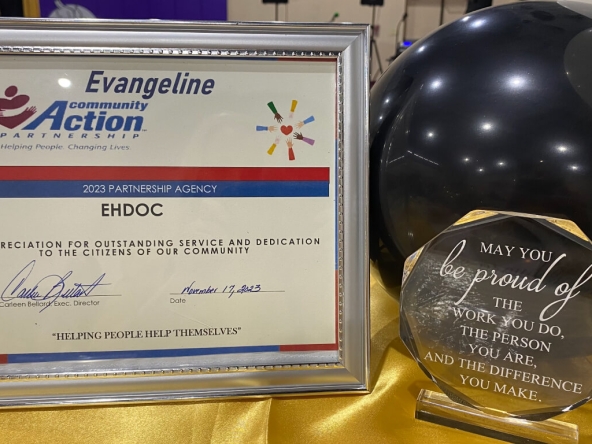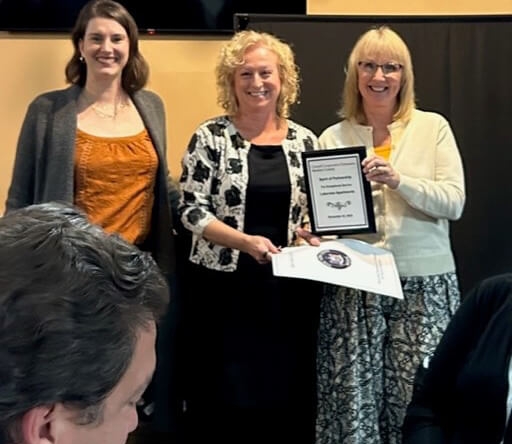What is the commitment for Affordable Senior Housing in communities nationwide?
by Christopher M. Shelton, EHDOC Board Chairman
As most communities nationwide know, the cost of housing has been sharply increasing over the past few years. This escalating cost of housing has been particularly harsh for low-income older persons who rely upon Social Security as their primary source of income, including most EHDOC residents. The Census Bureau identifies housing costs in excess of 30 percent of income as an indicator of a housing affordability problem.
The Department of Housing and Urban Development (HUD) classifies persons paying more than one-half of their monthly income for rent or living in severely inadequate housing as “worst case” rent burden; and confirmed in their latest annual report to Congress, HUD’s Worst Case Housing Needs: 2017, that there is a growing increase in the number of older Americans with worst case housing needs. In 2015, 8.3 million households (about 40 percent) controlled by an elderly person had worst case housing needs. This represents a 2.6 percentage increase from 2013.
In its latest annual report to Congress on the shortage of affordable housing, the National Low-Income Housing Coalition (NLIHC) reported that our country has a shortage of seven million rental homes that are affordable and available to extremely low income renters representing only 37 rental homes for every 100 households. Nearly half (48 percent) of these extremely low income renters (having 30 percent of the area median income) are seniors or persons with disabilities. The federal government provides a number of programs to assist low-income seniors and other eligible families with affordable housing, including public housing (40 percent are seniors) and Section 8 rental assistance (50 percent are seniors). However, the only federal housing program that is specifically for the production of affordable housing for very low-income older persons is Section 202 Supportive Housing for the Elderly.
EHDOC and other non-profit organizations have long used theSection 202 program to develop affordable senior housing; unfortunately, due to severe cuts in recent years, only one in three of eligible (aged 62 and 50 percent of area median income) very low-income seniors are assisted. Nationwide there are ten eligible very low-income older persons on waiting lists for each apartment that becomes available annually, resulting in long multiyear waiting lists. EHDOC and other non-profit organizations also work with state and local governments to secure land, policies and funds to expand and enhance affordable senior housing, including: Low-Income Housing Tax Credits (LIHC), bonds, tax exemptions, HOME, Community Development Block Grants (CDBG) and state and local housing trust funds for seniors. Given the many critical and priority needs in local communities for each of these scarce resources, there is great competition among for-profits and non-profits for these limited resources, including affordable senior housing.
Unfortunately, despite the keen competition for limited funding, in recent years (including the FY2020 federal budget that is now under consideration by Congress,) there have been repeated efforts by the Administration and Congress to severely cut and even eliminate many of these programs that state and local governments have used for affordable housing.
In response to the affordable housing crisis, voters in many communities throughout the country are taking actions at all levels of government to increase the awareness of the critical need, as well as solutions for affordable rental housing. While the current political and funding environments are challenging, it is encouraging that effective advocacy efforts have resulted in positive actions by some state and local governments to expand the supply of affordable housing. As reported in a recent NLIHC study, Affordable Housing Wins, “in 2018, advocates and voters confronted affordable rental housing shortages and skyrocketing rents by taking action at the voting booth…The vast majority of ballot measures to expand funding for housing production and preservation (22 of the 26) passed. Of those that failed, two measures passed with considerably more than 50% of the vote but failed to gain the required two-thirds threshold. Seven obligation bond ballot measures were passed.”
While the NLIHC study is an encouraging indication of potential voters’ support to address affordable housing needs, including senior housing; there were only a few affordable housing measures that were up for
consideration by voters last year.
A key question remains: What is the commitment for affordable senior housing in your state and local community?
It is clear that much needs to be done to educate our elected officials at all levels of government of the critical shortage of affordable and suitable senior housing. The need for affordable senior housing is evident by multi-year waiting lists; increased numbers of seniors becoming homeless; projected doubling of the current 48 million elderly population within the next few decades; and the dramatic loss of existing affordable housing, as mostly for-profit owners opt out of federal contracts and convert existing assisted affordable housing to unaffordable market-rate housing (over 60 percent loss of affordable housing during the past decade.)



